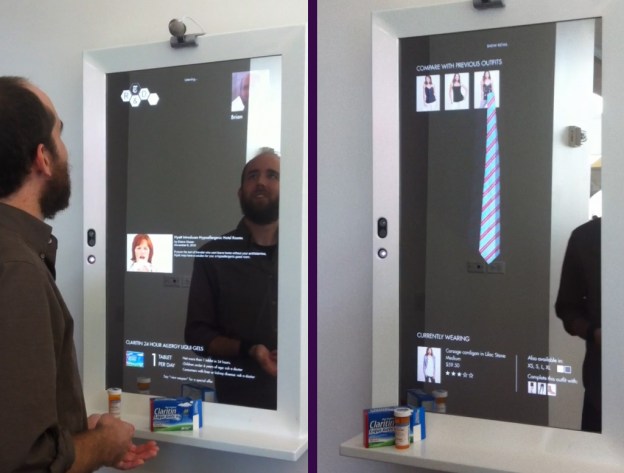
Designed by the research and development lab at the New York Times, a team has been working on a mirror that delivers media content to the user while spending time in the bathroom. Likely utilizing a Phillips Mirror TV, the display is tied into a Microsoft Kinect sensor that sits at the top of the mirror. Using voice recognition and motion sensing from the Kinect, the television allows the user to browse through the latest news headlines in the New York Times as well as check a calendar for appointments, read email and take a look at the latest updates on Facebook or Twitter. The user can also check the weather, a helpful tool for anyone getting ready to leave the house for the day.
The mirror also have the ability to scan RFID tags and bring up information about a sample product. For instance, if you had a medication and were unclear of the proper dosage, holding it up to the mirror would supply this information as well as offer the ability to reorder the drug if it was acquired through a prescription. When it comes to online clothes shopping, the mirror used the Kinect camera to scan an image of a user’s body type and allows the user to overlay clothing items on the body image to virtually try on clothes before purchasing them.
While the mirror is currently still a prototype, facial recognition through the mirror would work easily with the Kinect system. It’s possible that a user could walk into a bathroom shared with multiple members of the family, but the facial recognition recognizes the user and automatically logs in to check email as well as work with home automation to dim lighting or heat the shower water to a specific temperature. This technology can also be used around the house and in public spaces to provide helpful terminals. Check out the video below:


